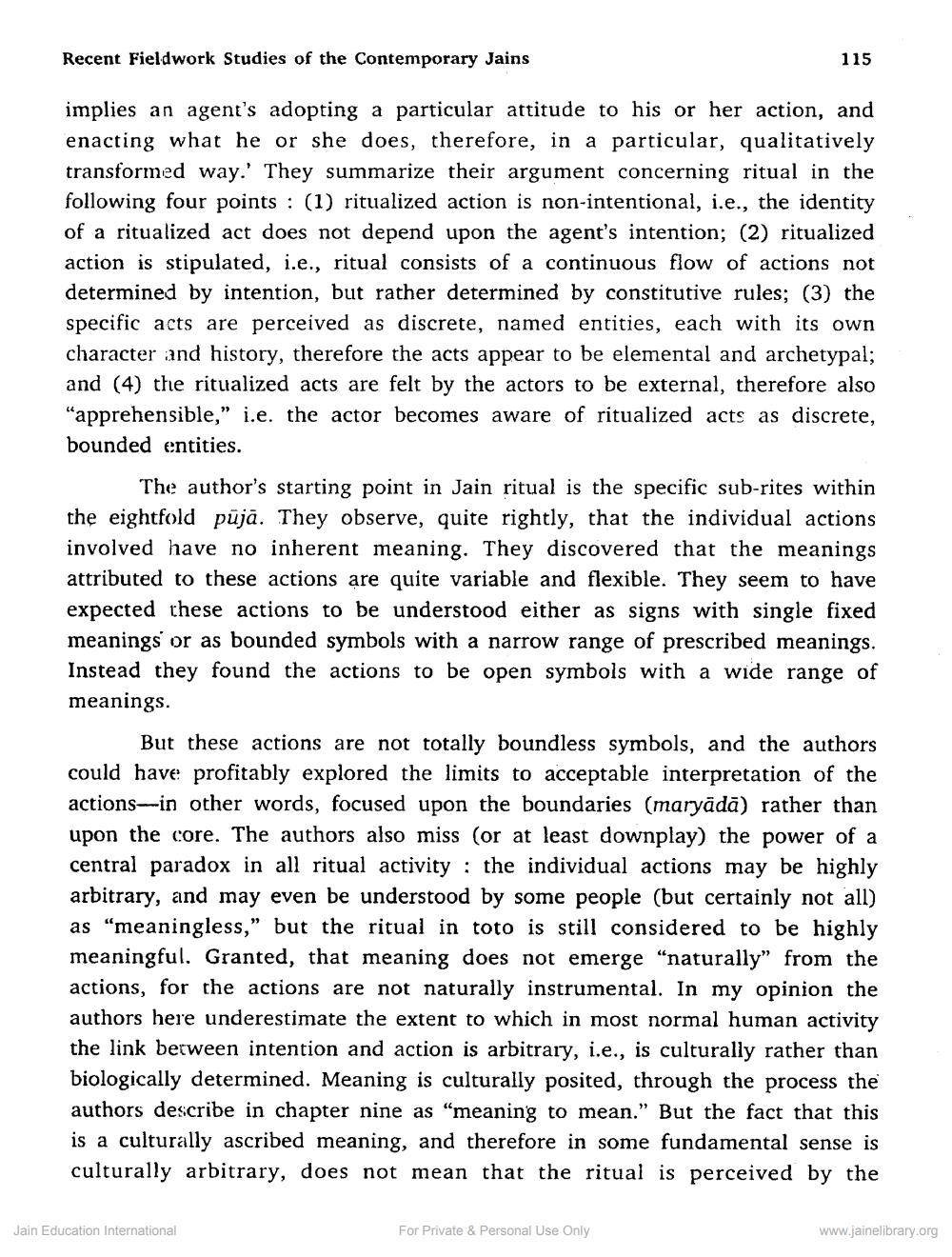________________
Recent Fieldwork Studies of the Contemporary Jains
115
implies an agent's adopting a particular attitude to his or her action, and enacting what he or she does, therefore, in a particular, qualitatively transformed way.' They summarize their argument concerning ritual in the following four points : (1) ritualized action is non-intentional, i.e., the identity of a ritualized act does not depend upon the agent's intention; (2) ritualized action is stipulated, i.e., ritual consists of a continuous flow of actions not determined by intention, but rather determined by constitutive rules; (3) the specific acts are perceived as discrete, named entities, each with its own character and history, therefore the acts appear to be elemental and archetypal; and (4) the ritualized acts are felt by the actors to be external, therefore also "apprehensible," i.e. the actor becomes aware of ritualized acts as discrete, bounded entities.
The author's starting point in Jain ritual is the specific sub-rites within the eightfold pūjā. They observe, quite rightly, that the individual actions involved have no inherent meaning. They discovered that the meanings attributed to these actions are quite variable and flexible. They seem to have expected these actions to be understood either as signs with single fixed meanings or as bounded symbols with a narrow range of prescribed meanings. Instead they found the actions to be open symbols with a wide range of meanings.
But these actions are not totally boundless symbols, and the authors could have profitably explored the limits to acceptable interpretation of the actions-in other words, focused upon the boundaries (maryādā) rather than upon the core. The authors also miss (or at least downplay) the power of a central paradox in all ritual activity: the individual actions may be highly arbitrary, and may even be understood by some people (but certainly not all) as “meaningless," but the ritual in toto is still considered to be highly meaningful. Granted, that meaning does not emerge “naturally" from the actions, for the actions are not naturally instrumental. In my opinion the authors here underestimate the extent to which in most normal human activity the link between intention and action is arbitrary, i.e., is culturally rather than biologically determined. Meaning is culturally posited, through the process the authors describe in chapter nine as "meaning to mean." But the fact that this is a culturally ascribed meaning, and therefore in some fundamental sense is culturally arbitrary, does not mean that the ritual is perceived by the
Jain Education International
For Private & Personal Use Only
www.jainelibrary.org




